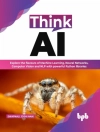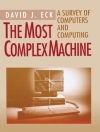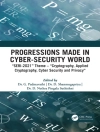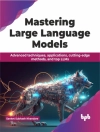The subject of this monograph are restarting automata. The definition of these automata is motivated by the linguistic technique of analysis by reduction. This technique, which can be used to analyze sentences in natural languages with a rather free word-order like Czech (or Latin or German), consists of a sequence of step-by-step simplifications of a given sentence. Each of these simplifications is realized by a single reduction operation, which consists of either the deletion of one or several words from that sentence or the replacement of a (possibly discontinuous) substring of that sentence by a shorter substring. It is required that each application of such a reduction operation must preserve the syntactical correctness of the sentence. Accordingly, a restarting automaton consists of a finite-state control, a flexible tape that initially contains the input, and a read-write window of a fixed finite size that works on that tape. The first type of restarting automaton was presented at the international conference FCT in 1995. This type was required to restart as soon as it executes a rewrite operation, that is, the window jumps back to the left end of the tape and the finite-state control is reset to the initial state. Moreover, each rewrite operation simply deletes one or more letters from the contents of the read-write window. Subsequently, many different variants of the restarting automaton have been defined and studied. In particular, proper length-reducing rewrite operations have replaced the original delete steps, additional non-input letters, called auxiliary letters, have been added to the alphabet, and the original combined rewrite/restart operation has been split into a rewrite operation and a separate restart operation. Thus, the restarting automaton is no longer just a particular type of automaton, but it has evolved into a whole family of various types of automata that are specified through several parameters. The objective of the current monograph is to collect the many results that have been obtained on the various types of restarting automata in one place and to present them in a uniform and systematic way. In particular, the influence of the various parameters on the expressive capacity of the resulting types of restarting automata is studied in detail. Other topics include the descriptional complexity and inductive inference of certain types of restarting automata, cooperating distributed and parallel communicating systems of restarting automata, restarting automata with output, weighted restarting automata, and restarting automata for picture languages and tree languages. This monograph may serve as a book of reference for researchers working in formal language and automata theory, as a guide to the literature on restarting automata, and as a text book for an advanced undergraduate or graduate course in formal language and automata theory.
Innehållsförteckning
Introduction.- Analysis by Reduction.- The Restarting Automaton and Its Parameters.- Descriptional Complexity.- Learnability for Restarting Automata.- Appendix A: List of Open Problems.- Appendix B: List of Example Languages.
Om författaren
Prof. Dr. Friedrich Otto is affiliated with the University of Kassel. He is a retired associate professor of the Department of Electrical Engineering and Computer Science.












